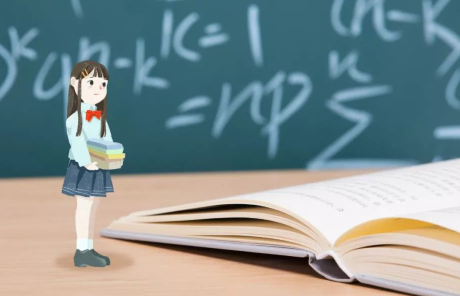
When mummifying their kings and queens, ancient Egyptians would remove the brain and all the internal organs, except for one: The heart. Believing it held all thought and feeling, the deceased would need it in the afterlife, when they… rose again.
当古埃及人将他们的国王和王后制成木乃伊时,他们会将大脑和所有的内脏切除,有一个器官除外:心脏。(他们)相信心承载了所有的思想和感受,死者来世会需要它,当他们…再一次起来的时候。
By 2000 BC, Chinese doctors had uncovered the heart's role in pumping blood throughout the body, while Western thinkers from Aristotle to the Renaissance believed the heart governed the emotions, a notion so powerful that it still persists today, in… a different form. The heart symbol's resemblance to the real thing is… debatable.
早在公元前2000年,中国大夫就已经发现心脏泵血并流向全身中的作用,而从亚里士多德到文艺复兴时期的西方思想家相信心脏控制着情感,这种观念如此强大,至今仍以……另一种形式存在。心脏的象征性与真实事物的相似性是……有争议的。
Its origins are uncertain, but we see it as far back as the 6th century BC. Coins from Cyrene, in what is now Libya, carry the familiar emblem, representing silphium, a now-extinct plant used as a cooking spice, perfume, aphrodisiac, and… contraceptive.
它的起源尚不确定,但我们可以追溯到公元前6世纪。赛勒内(今利比亚境内 )的硬币上印有人们熟悉的标志,象征着水飞蓟,一种现已灭绝的植物,用作烹饪香料、香水、春药和……避孕药。
In the 17th century, St. Mary Margaret Alacoque reported seeing a vision of the sacred heart of Jesus, surrounded by thorns, and the symbol has since been associated with love and devotion. Today we know that love, along with all of our thoughts, desires, and emotions, comes from our brain, not our chest.
17世纪,圣玛丽·玛格丽特·阿拉科克(St.Margaret Alacoque)称她看到了耶稣神圣的心被荆棘环绕的景象,这个象征物从此与爱和奉献联系在一起。今天我们知道爱,以及我们所有的思想、欲望和情感,都来自我们的大脑,而不是我们的怀里。
"Where is fancy bred. . . in the heart or in the head? Shall we roll on?"
“爱情生长在何处....。在心房还是脑海?我们继续吗?”
I guess most people don't find it that romantic when you say"I love you with all my limbic system. But even though love lives among our neurons, we can feel it here in a very real way.
当你说“我用我脑中的所有边缘系统爱你”时,我想大多数人不会觉得这很浪漫。但即使爱存在于我们的神经元中,我们也能以一种非常真实的方式感受到爱。
Physical pain activates the same regions of our brain as emotional loss. That neurological stress can overstimulate the body's vagus nerve, causing nausea, dizziness, and physical pain… real, actual heartbreak.
身体上的疼痛激活了我们大脑中与情绪丧失相同的区域。神经压力会过度刺激身体的交感神经,引起恶心、头晕和身体疼痛…真正意义上的心碎。
It's not all bad. When we see of a loved one, our brain stimulates the release of epinephrine and norepinephrine from our adrenal glands, causing our heart to beat faster.
也不完全是不好的。当我们看到喜欢的人时,我们的大脑会刺激肾上腺释放肾上腺素和去甲肾上腺素,使我们的心跳加快。
But yes, one can desire too much of a good thing. Heart rates of 200 to 250 beats per minute could kill you or me, but to a pygmy shrew that would feel tame.
但是,是的,一个人会对一件好事有过多期望。每分钟200到250次的心率可能会使你我致命,但对一个矮鼩鼱来说,这太稀松平常了。
This thumbnail-sized relative of the mole has a resting heart rate of 1300 beats per minute. About this fast.
这个跟缩略图差不多大的鼹鼠的静息心率为每分钟1300次。大概实在这样的速度。
That even beats a hummingbird's hyperactive heart, and more than 15 times the average human's. A pygmy shrew will live just a year and a half, but in that time their heart will beat about a billion times.
它甚至超过了蜂鸟的心率,也比一般人的心脏活跃15倍多。一只矮鼩鼱只能活一年半,但在这期间它们的心脏会跳动大约十亿次。
An elephant? About a billion beats.
一只大象呢?也大约十亿次。
A rabbit? About a billion.
一只兔子呢?还是大约十亿次。
In fact, animals of all sizes seem to get about a billion heartbeats in a lifetime. The heart isn't some sort of ticking clock counting down to six feet under, but there is some truth to the billion heartbeat hypothesis.
实际上,各种体型的动物一生中都会有大约10亿次的心跳。心脏并不是一个滴答滴答的时钟,倒数到6英尺以下,但数十亿次心跳的假设是有道理的。
Because they have a larger ratio of surface area to mass, small animals lose heat more quickly than larger animals, so they have higher metabolic rates and their cells wear out more quickly. Scientists think that lower metabolic rates are directly linked with longer lifespans.
因为它们的表面积与质量之比更大,所以小动物散热比大动物更快,所以它们有更高的代谢率,而且它们的细胞累得更快。科学家认为低代谢率与长寿直接相关。
As mass goes up, heart rates scale to the minus one-fourth power. So a cat is about 100 times more massive than a mouse, and its heart beats about one-third as fast. It works for lifespan too, only larger mass scales to the positive one-fourth power.
随着质量的增加,心率缩小负四分之一。所以一只猫的体重是一只老鼠的100倍,它的心跳速度大约是老鼠的三分之一。这也适用于寿命,只有更大的质量才能达到正的四分之一。
That cat, 100 times larger than the mouse, lives about three times as long. Biologists call this the quarter-power scaling principle, for different sized animals, measures of metabolism scale in multiples of one-fourth.
那只猫比老鼠大100倍,寿命大约是老鼠的三倍。生物学家称之为四分之一的标度原理,对于不同大小的动物,用四分之一的倍数来衡量代谢标度。
Except for us. We seem to be an outlier.
但我们排除在外。我们似乎是个局外人。
Following that rule of size, we live about three times as long as we should, we get about twice as many heartbeats as you'd expect. The advancements of modern science and medicine have extended our lifespans.
按照这个大小规则,我们的寿命比原本的寿命长三倍,心跳次数是预期的两倍。现代科学和医学的进步延长了我们的寿命。
Caring for one another helps us live longer. That's a lovely thought.
挂念一个人有助于我们活得更久。这是一个有爱的想法。
Stay curious.
保持好奇心。
, 生活百科网
生活百科网




